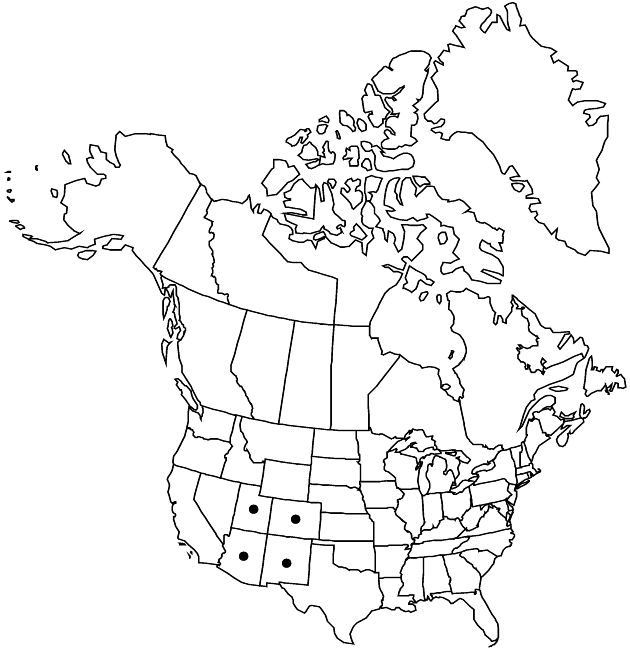Antennaria rosulata
Bull. Torrey Bot. Club 24: 300. 1897.
Dioecious. Plants 0.2–1.5 (–2) cm. Stolons 1–2 (–3.5) cm. Basal leaves 1-nerved, spatulate, spatulate-obovate, or oblanceolate, 6.5–13 × 2–5 mm, tips mucronate, faces silvery gray-pubescent (often obscurely stipitate-glandular). Cauline leaves linear, 2–9 mm, not flagged (apices acute). Heads usually borne singly (rarely 2–3; subsessile among basal leaves). Involucres: staminate 5–7.5 mm; pistillate 6–10 mm. Phyllaries distally white. Corollas: staminate 2.5–4.5 mm; pistillate 3.5–5.5 mm. Cypselae 0.8–1.5 mm, papillate (bases puberulent); pappi: staminate 3.5–5 mm; pistillate 5.5–6.5 mm. 2n = 28.
Phenology: Flowering summer.
Habitat: Open slopes and dry meadows, lower montane to montane, or subalpine zone, usually with big sagebrush, Artemisia tridentata
Elevation: 2200–3300 m
Distribution

Ariz., Colo., N.Mex., Utah.
Discussion
Antennaria rosulata is easily recognizable by its silvery gray leaves, dense, humifuse growth form, and heads borne singly (R. J. Bayer 1987b). Its distribution is centered on the four corners area (Bayer and G. L. Stebbins 1987). It has probably contributed to the origins of some of the clones of A. rosea with low stature and low numbers of flowering heads that are found in Arizona, Colorado, New Mexico, and Utah.
Selected References
None.